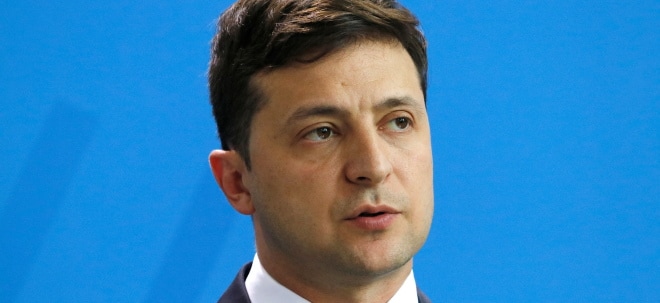Toyota broadly outlines next-generation Prius; developing wireless inductive charging for the plug-in model; bullish on hydrogen
28 August 2013
Toyota’s next-generation Prius will deliver significantly improved fuel economy in a more compact package that is lighter in weight and lower in cost, according to Toyota Motor Corporation (TMC) Managing Officer Satoshi Ogiso. Ogiso—who earlier in his career had been the chief engineer for the Prius, chief engineer for the Prius family, and chief engineer, product planning—made the remarks at the “2013 Toyota Hybrid World Tour” event the company staged in Ypsilanti, Michigan.
The performance of this new generation of powertrains will reflect significant advances in battery, electric motor and gasoline engine technologies. Among the broad technology advances Ogiso outlined during his talk were:
“In its three generations, Prius MPG has improved on average by about 10%, each generation. The challenge to continue to improve at this rate—to beat your own record—becomes very difficult, but makes it all the more motivating. We are very motivated to beat our record.”
—Satoshi Ogiso
The next Prius will feature improved batteries with higher energy density. Toyota has stepped up its research, development and production capacity of both NiMH and Li-ion batteries and will use these technologies where appropriate in its expanding focus on electrification of the automobile.
Toyota has also ramped up development on new battery technologies such as solid state and lithium air, as well as devoting resources focused on chemistries beyond lithium, such as magnesium and other low-valence materials.
The next Prius will also feature electric motors that will be smaller in size. Ogiso noted that the current Prius motors have four times the power density of the first model and that “the next will be even higher.”
The gasoline engine in the next-generation Prius powertrain feature thermal efficiency of greater than 40%; the thermal efficiency of the gasoline engine in the current Prius is 38.5%.
To complement these substantial gains in powertrain development the next Prius will ride on a vastly improved chassis, Ogiso said. The next Prius will feature the Toyota New Global Architecture (TNGA). It will have a lower center of gravity and increased structural rigidity. This, along with many other improvements will allow for beneficial gains in ride-and-handling, agility and aerodynamics.
Improved aerodynamics will contribute to an all-new exterior design. Ogiso promised a roomier interior and significant refinements in design, layout and ease of operation.
Prius PHV. The next-generation Prius PHV (plug-in hybrid vehicle) is being developed in parallel with the standard Prius model.
We have been listening very carefully to Prius PHV owners and are considering their requests for additional all-electric range. We have also heard from owners that they would like a more convenient charging operation. In response, we are developing a new wireless/inductive charging system that produces resonance between an on-floor coil and an onboard coil to transmit power to the battery, providing charging without the fuss of a cable.
—Satoshi Ogiso
Ogiso said verification work on the system will be conducted in Japan, the US and Europe in 2014.
Hydrogen. Ogiso re-emphasized the importance of hydrogen fuel cell vehicles, which he said “will be in our future for a long time”. Toyota’s first commercially available hydrogen fuel cell vehicle will go on sale in global markets in 2015.
This year at the Tokyo Motor show, Toyota will unveil a well-defined mid-size four-door sedan hydrogen fuel cell concept. That vehicle will make its North American debut at the 2014 Consumer Electronics Show in Las Vegas in January.
For now, I can tell you that the hydrogen fuel cell stack is currently developing 3 kW per liter of power density. We believe that’s a “world’s best” and about twice that of the fuel stack we have been using for the Highlander fuel cell hybrid vehicle that many of you have driven.qdash;Satoshi Ogiso
Motorsports. Ogiso also highlighted how hybrid technology is influencing motorsports, and how motorsports will aid the development of better hybrid technologies in the future.
The challenge of the hybrid race car has been the added weight of the battery and electric motor, he noted. Toyota’s TS-030 uses supercapacitors instead of batteries. The hybrid powertrain integrates a unique inverter, with a 300-hp electric motor/generator sandwiched between the 6 speed-transmission and the 530-HP V8 engine.
The extreme nature of racing, tests the durability and reliability limits of vehicle components, systems and software helping make TS-030 the world’s fastest and possibly the most effective rolling hybrid laboratory program.
—Satoshi Ogiso
Market futures. In a separate talk, Toyota Motor Sales (TMS) Senior Vice President of Sales Bob Carter issued a challenge for the industry to significantly step up its commitment to hybrids as a core technology.
Bob Carter mentioned earlier today that to take full effect, hybrid technology must be consumed in high volume. Regulatory push cannot, on its own, induce consumer pull. To truly have an effect, our industry must develop a diverse array of products that consumers are willing to buy.
Where the cost premium is low convenience is high and the benefits to the environment and the pocketbook are clear. Which is precisely where we believed hybrids would be, 15 years ago.
Today, patience and a long vision are still the cost of admission. Because consumer adoption of less convenient and higher cost technologies have been slow and will continue so. But fifteen years from now, I believe that plug-in hybrids, battery electrics, and especially hydrogen fuel cells could be as common as hybrids are today.
—Satoshi Ogiso |


 Thread abonnieren
Thread abonnieren



